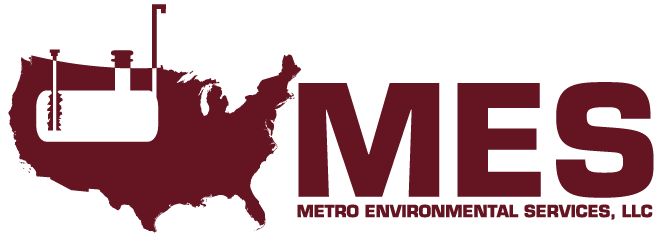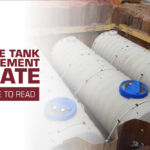Latest EPA Update
EPA will periodically update this compendium. If you would like to submit a resource for possible inclusion, please contact us.
Introduction
A typical leaking underground storage tank (LUST) scenario involves the release of a fuel product from an underground storage tank (UST) that can contaminate surrounding soil, groundwater, or surface waters, or affect indoor air spaces. Early detection of an UST release is important, as is determining the source of the release, the type of fuel released, the occurrence of imminently threatened receptors, and the appropriate initial response. The primary objective of the initial response is to determine the nature and extent of a release as soon as possible.
Warning signs of a release can be identified through inspection and monitoring, inventory control, and leak-detection technology. Once the release is confirmed, notification to the appropriate government agency must follow particular state or tribal requirements.
In some cases, emergency response actions must be taken immediately without waiting for government approval or oversight. Initial actions are all focused on protecting public health, safety, and the environment. Under most state regulations, the operator or owner has specific time frames to conduct initial response actions, submit reports, complete an initial site characterization, and conduct free product removal. It is important that LUST personnel reinforce these required targets in the event that an enforcement action becomes necessary.
Release Sources
Identifying the specific portion of the tank or tank system that has caused a subsurface release is a critical first step. Common vulnerable areas include the bottoms of USTs (particularly underneath the manhole where gauging sticks are or were formerly used), associated piping, UST fill manholes, dispensing pumps, and areas known likely to have installation issues. Piping failures are especially common at UST junction points and when ground settlement in the vicinity of an UST varies from one end of a tank to the other.
Many states have conducted studies on the sources and causes of releases. Links to some of these studies are provided below, but there may be additional information available from other sources.
STP 1161 – Leak Detection For Underground Storage Tanks EXIT Compilation of 18 peer-reviewed papers on leak detection issues, such as internal monitoring, external monitoring, regulations and standards, and site and risk evaluation.
Preventing Underground Storage Tank Releases
Guidance from EPA on how to prevent UST releases, including spill protection, overfill protection, and corrosion protection.
Warning Signs of a Release
Releases are detected in various ways. Leak detection equipment may signal a release, or unexpected water may be detected in a tank. There may be a spill identified while delivering fuel into an UST or dispensing fuel at the point of sale.
Releases may also be identified during tank upgrades or replacements as these activities are also known to be common causes of releases.
Often, inventory control can alert the UST operator of a release, which may be discovered as a discrepancy in the inventory of fuel delivered versus the fuel dispensed from the UST. Newer UST systems have automatic tank gauging systems that can immediately identify a discrepancy using electronic measurement sensors and sound an alarm.
If a tank or UST system is being upgraded or replaced, field screening and sampling by a qualified professional may help to quickly identify a release and its specific cause. Experienced field oversight can also help limit the impact of a release on public health, safety, and the environment. The benefits to an UST owner of an immediate discovery of a release are reduced downtime and costs.
How can I Tell if a Release has Occurred?
Brief summary by EPA on warning signs of a release, with links to state and EPA regional contacts and reporting information.
Musts for USTs: A Summary of the Federal Regulations for Underground Storage Tank Systems (EPA 510-K-15-001) November 2015
EPA guide to USTs that includes a chapter on what to do about UST releases.
Detecting UST Releases
EPA summary of leak detection requirements and methods, and numerous links to additional publications and websites.
UST Technical Compendium Category 3: Release Detection (RD)
Questions and answers compiled by EPA that provide clarification on release detection regulations.
UST Technical Compendium Category 4: Release Investigation, Confirmation, and Corrective Action (RICC)
Questions and answers compiled by EPA that provide clarification on release investigation, confirmation, and corrective action.
Release Detection for Underground Storage Tanks and Piping: Straight Talk on Tanks (EPA-510-K-16-003) May 2016
EPA booklet that provides descriptions of several leak detection methods for tanks and piping, as well as explanations of the regulatory requirements for leak detection.
Operating and Maintaining Underground Storage Tank Systems: Practical Help and Checklists (EPA-510-K-16-001) February 2016
EPA document that identifies the operation and maintenance (O&M) procedures to follow to ensure that USTs do not have leaks, including information on detecting leaks.
Subpart D–Release Detection
Federal regulation (40 CFR Part 280) on release detection (see 40 CFR 280.43 and 44 for methods of release detection for tanks and piping).
Release Confirmation
Confirming that a release has occurred from an UST should be done systematically. A first step is to determine if the UST system and monitoring equipment are operating correctly. Sensors that monitor releases may need to be checked to ensure that they are functioning properly. Another step may involve
checking fuel delivery receipts to examine inventory. Once the equipment and inventory have been checked, a release can be confirmed by testing the tightness of the UST system using government and industry acceptable methods. Tank tightness is an indication of leaks, including very small or slow leaks.
Tank Tightness Testing with Inventory Control
EPA summary page that includes information on tank tightness testing and inventory control and associated regulatory requirements.
UST Technical Compendium Category 4: Release Investigation, Confirmation, And Corrective Action (RICC)
Questions and answers compiled by EPA that provide clarification on release investigation, confirmation, and corrective action (RICC) regulations.
Test Method Index and Vendors EXIT
List of vendors and equipment for specific test methods compiled by the National Work Group On Leak Detection Evaluations (NWGLDE). Subpart E–Release Reporting, Investigation, and Confirmation Federal regulation (40 CFR Part 280) on release reporting, investigation, and confirmation (see 40 CFR 280.52 for release investigation and confirmation requirements).
Regulatory Notification
Owners and operators of USTs are required to investigate, confirm, and notify the authorities of all suspected releases within 24 hours or other time period specified by the state or tribal agency. The amount of time permitted before providing notification as well as the reportable quantity threshold vary by implementing agency.
Documentation and reporting requirements are also unique to each state and tribe; inventory and maintenance records must be maintained at the facility according to these requirements to allow consultants and regulators access to information on the release.
Subpart E—Release Reporting, Investigation, and Confirmation
Federal regulation (40 CFR Part 280) on release reporting, investigation, and confirmation (see 40 CFR 280.50 and 53).
What are my Reporting Responsibilities as an Owner or Operator? EPA summary page on owner and operator reporting responsibilities that includes links to state and local contacts.
How do I Report a Release from an UST System?
EPA summary page on how to report an UST release that includes links to state and local contacts and EPA regional UST program contacts.
Immediate Response Actions
Once a leak is confirmed, immediate response actions must be taken to minimize or eliminate the source of the release and to reduce potential harm to human health, safety, and the environment. Each state has unique requirements for initiating responses to a release, and it is up to the UST owner or operator to
conduct actions in compliance with his/her local rules. State, local, and tribal contacts can help identify qualified professionals who will be able to provide quick assistance to help reduce costs and liability.
Immediate responses may include removing flammable or explosive materials from the release area and preventing discharges to stormwater utilities, wetlands, and surface waters. It may also be necessary to provide bottled water for individuals, families, or businesses that rely on groundwater for drinking, bathing, and food preparation. The intrusion of petroleum vapors into indoor building spaces has become an important concern and may require the active ventilation of indoor building spaces.
What do I do About UST Releases?
EPA summary page outlining short- and long-term actions that must be taken after an UST release.
ASTM Guide D5745-09: Standard Guide for Developing and Implementing Short-Term Measures or Early Actions for Site Remediation EXIT
Industry standard that provides a systematic approach for the application and execution of early actions for site remediation, including development of a Conceptual Site Model.
LAST UPDATED ON NOVEMBER 21, 2018






